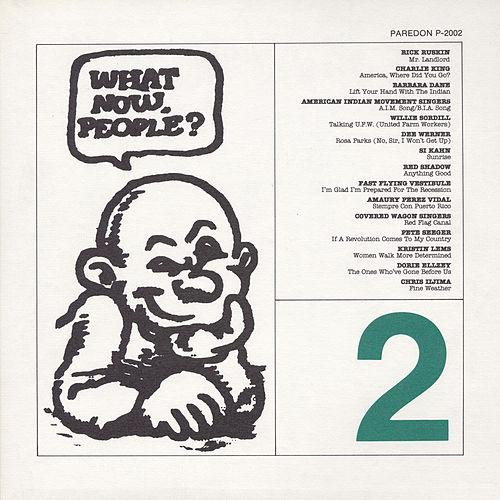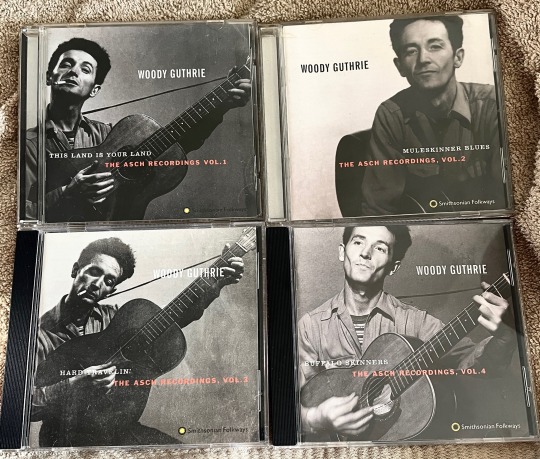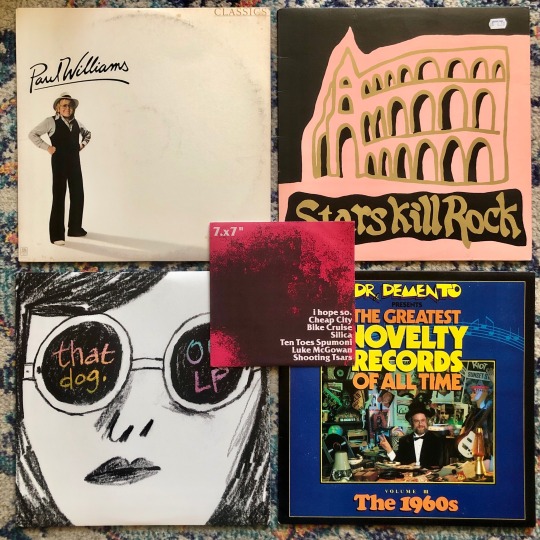#Smithsonian Folkways
Explore tagged Tumblr posts
Text


a classic recording. Worth listening to for a number of reasons: musically, historically and of course as something small on the course that will win.

Listen on YouTube here
The liner notes here
472 notes
·
View notes
Text
i am Obsessed with "The Union Boys" band, formed on March 11, 1944, that literally only existed for one day.
they released one album consisting of entirely anti-fascist, anti-racist, and pro union songs. And it was given its name by Moses Asch, very descriptive name.

consisting of Josh White (underrated ! listen to his music), Sonny Terry, Brownie McGhee, Pete Seeger, Burl Ives, Tom Glazer, and technically woody guthrie. this album is the reason i always have "UAW-CIO" stuck in my head lol.
#join that UAW-CIO makes the army roll and go *stimming*#the union boys#union#josh white#sonny terry#pete seeger#burl ives#brownie mcghee#tom glazer#protest folk#socialist folk#union songs#black folk#leftist#iww#woody guthrie#40s#smithsonian folkways#folkways#Spotify
7 notes
·
View notes
Text

Currently Playing
Smithsonian Ethnic Folkways Library PALESTINE LIVES! SONGS FROM THE STRUGGLE OF THE PEOPLE OF PALESTINE
16 notes
·
View notes
Text

a hobo clown; ink and watercolor
last eleven day’s listening:
love letter - everyone wants something beautiful
various - broadside ballads vol 1
various - philadelphia folk festival 1962 volume ii
r.e.m. - unplugged 1991
various - new folks
fugazi - steady diet of nothing
fugazi -red medicine
various - american history in ballad and song

#drawing#painting#recordoftheday#records#watercolor#watercolorpainting#art#smithsonian folkways#fugazi#rem#philadelphia folk festival#broadside ballads#love letter#clown#clown art#hobo clown
2 notes
·
View notes
Text
346: Various Artists // What Now, People? 2

What Now, People? 2 Various Artists 1977, Paredon
Paredon was an activist record label founded in 1969 that specialized in protest music, largely American acoustic folk with a good helping of releases by international leftist artists. Inspired by the Cuban Revolution and the model of “People’s Singers” like Joe Hill and Pete Seeger, Paredon put out about 50 releases over their 20ish years in operation. The mid-‘70s compilation series What Now, People? (three volumes between 1976 and 1977) was a musical magazine intended to stimulate development of new protest songs for marches, rallies, labour meetings, etc. by providing complete lyrics, chords, and commentary from contemporary folk singers.
The back of the included booklet asks the purchaser to mail back a “political record review” in the form of a questionnaire. It’s a little late for me to field questions 7 through 9, which concern suggesting record stores and radical organizations who might be interested in carrying Paredon stock, but I’ll do my best with the others.
youtube
1. HOW DID YOU FIRST HEAR ABOUT THIS RECORD?
I found a copy of it in the used section of Phonopolis Records, on Rue Bernard, Mile End, Montreal, Quebec in 2021.
2. WHAT WAS YOUR REACTION TO IT POLITICALLY?
I have always liked the “musical magazine” concept, and the notion of making a body of political songs accessible for people to not only listen to but learn how to play themselves (in the manner of The IWW Songbook) is very cool. On a level of pure politics, it’s hard to disagree with the lyrics’ notions that America must become more egalitarian or it will consume itself morally, environmentally, socially, and psychically. (Thankfully this is no longer a problem today.)
I’m not sure the emphasis on ‘60s-style folk was the strongest tact however. The late ‘70s was an era with no shortage of powerful protest music, but this collection largely eschews R&B and even rock (with apologies to Red Shadows’ limp Chuck Berry rewrite “Anything Good��). While the veteran Seeger’s “If a Revolution Comes to My Country” grapples with both the promise and challenge of political change in an immediate way, the efforts of the lesser-knowns mostly feel like they’re roleplaying as the firebrands of a prior era. The most genuinely “revolutionary” sounding pieces are those that come from outside the coffee shop scene, like Cuban Amaury Pérez Vidal’s ode to Puerto Rican independence “Siempre con Puerto Rico” and Dakota Sioux activist Floyd Westerman’s “B.I.A.” song—perhaps because these artists had much more direct connections with revolutionary political movements than most of the whites here.
3. WHAT DID YOU THINK OF THE BOOKLET?
Fantastic. It’s a great and in some ways inspiring souvenir of the era, and I wish more artists would include the chords and lyrics to their songs.
4. HOW HAVE YOU USED THIS RECORD?
I don’t believe that What Now, People? 2 would be of much use at a contemporary organizing meeting or rally, so largely for scholarly interest; for enjoyment of some pretty folk numbers (Dee Werner, Dorie Ellzey); for yet another reminder of the circularity of political struggle.
youtube
5. WHAT OTHER RECORDS SHOULD BE MADE?
Paredon’s focus on bringing (at the time) difficult to find foreign artists to American audiences will stand as their greatest aesthetic achievement, and I wouldn’t have been upset if there were more. Perhaps some more overtures to Black activists and musicians might’ve led to a more dynamic result with this record in particular.
6. WHAT NOW, PEOPLE?
There is no shortage of protests to go to, letters to write, plans to make. Hopefully we’ll see each other out there, with songs in our hearts.
346/365
#pete seeger#paredon#smithsonian folkways#amaury perez#r. crumb#floyd westerman#protest music#musical magazine#american indian movement#music review#vinyl record#'70s music#folk music#protest songs
2 notes
·
View notes
Text
Oldies.

2 notes
·
View notes
Text
Jake Blount - The New Faith (2022)

For our second Z-sides: Music Reviews republication, Zack Clemons-Sullivan looks at The New Fait, the latest album from Providence, Rhode Island folk / Americana / blues / gospel artist Jake Blount, released September 23, 2022 on Smithsonian Folkways Recordings.
For his second record, Jake looked to the future. The New Faith explores a world changed by the climate crisis through the eyes of Black Americans as they find community through traditional music as climate refugees. Jake displayed his songwriting skills on this project and continues to show his prowess on the violin and banjo while expanding on the rootsy sounds of his debut. The interludes add a unique depth like that of an audiobook and I find Demeanor’s raps to be a uniquely special addition
Read Zack's full review and listen to and order the album at the link below or on Z-sides: Music Reviews' website (link in article):

#jake blount#folk#folk music#americana#folk blues#gospel music#queer music#cave dweller music#Smithsonian Folkways#Blues#Bandcamp
7 notes
·
View notes
Text
Gordon Bok joins the Smithsonian Folkways!
I am simply beoynd excited to hear that Gordon Boks solo catalouge has been offered to - and accepted by - Smithsonian Folkways as part of their vast musical heriatge that they preserve and currate. It seems this is part of a slightly larger deal for Timberhead Music, who has had care of the albums, to release all its contents to the Smithsonian.
Much of Boks early works are already preserved by this fine institution. The albums he produced as part of a trio with Ann Mayo Muir and Ed Trickett were all released by Folk-Legacy Records, for which the trio was their flagship artists and most famous contributers. The labels 140-record catalouge joined the Smithsonian in 2019.
Boks managment happily write about how this transfer of ownership will allow all his albums, many of whom they have let go out of print, be available both digitally and physically. It will also see much of his catalouge return to streaming services. No set date has been made for this yet, as it depends on the time smithsonian Folkways need in order to proccess the transfer and sort the material.
However, already now you can listen and buy tracks pr albums from the Smithsonian Folkways website. I just bought a track I have much missed since it disappeared from streaming, "Karl Edstrom and the Hester" from his 1991 album "Schooners". Each individual track price at $1.49.
4 notes
·
View notes
Photo

Smithsonian Folkways Black History Month playlist presents a provocative sound collage of the African American experience that captures the groups earliest history on the African continent into the Black Power period of the 1970s. (via A Black History Sound Collage, Documenting The Progression of Black American History | Smithsonian Folkways Recordings)
#Blackness#America#music#African American#Smithsonian Folkways#playlist#Black History Month#Maya Cunningham#collage#sound collage#arts activism
3 notes
·
View notes
Text

#mike seeger#southern banjo#banjo#clawhammer banjo#vintage banjo#smithsonian folkways#fivestringbanjo
8 notes
·
View notes
Text
the house carpenter (child ballad 243) from the watson family smithsonian folkways recordings 1963
annie watson & gaither carlton
#just found this track i used to play on repeat a long time ago#fave#annie watson#she was born in 1895 & learned this song as a child#gaither carlton#1963#doc watson#watson family#smithsonian folkways#music#audio#my posts
0 notes
Text

AllMusic Staff Pick: Various Artists Classic Maritime Music from Smithsonian Folkways Recordings
In the early-2000s, Smithsonian Folkways was in the process of digitizing its vast archive of historic recordings from throughout the 20th century. Among its long-out-of-print prizes were records by Paul Clayton & the Foc'sle Singer, the X-Seamen's Institute, and British icons A.L. Lloyd and Ewan MacColl. When this vital collection was released in 2004, who could have predicted that a youthful subculture of the internet would suddenly embrace many of these traditional sea chanteys, nearly two decades later?
- Timothy Monger
1 note
·
View note
Text






Smithsonian Folkways institute
records
3 notes
·
View notes
Text

Currently Playing
Smithsonian Ethnic Folkways Library FOLK MUSIC OF PALESTINE
16 notes
·
View notes
Text

a blue heron; ink and watercolor
last nine day’s listening:
various - dr. demento presents the greatest novelty records of all time: the 1960s
chokehold/left for dead - split
talib kweli - quality
that dog. - old lp
various - smithsonian folkways presents foodways
various - 7.x7”
various - rock stars kill
paul williams - classics

#drawing#painting#recordoftheday#records#watercolor#watercolorpainting#art#blue heron#paul williams#kill rock stars#dollhouse lighting#smithsonian folkways#that dog#talib kweli#chokehold#left for dead#dr demento#blue herons#birding#bird art
3 notes
·
View notes
Text
Music or Noise? - Matmos (2023)
A quite Reichian intro! Commissioned by Smithsonian Folkways last year to commemorate their 75th anniversary.
1 note
·
View note